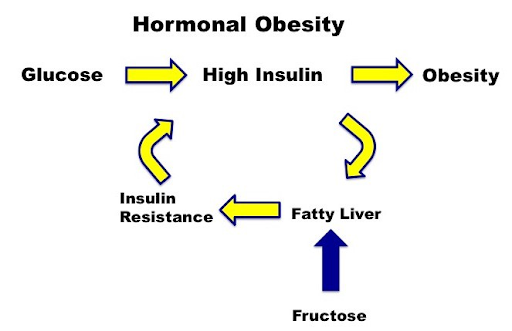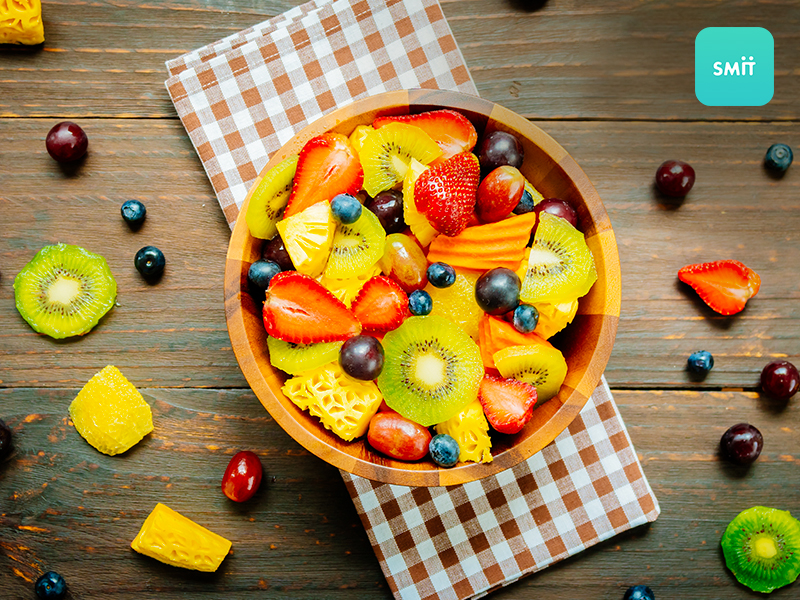Studies suggest that consuming high amounts of Fructose can increase the risk of non-alcoholic fatty liver disease. Fatty liver disease can lead to excess fat storage in the liver, causing inflammation and damage of liver cells resulting in a more aggressive disease called Non-alcoholic fatty liver disease (NAFLD). This condition can further progress to scarring liver tissue (cirrhosis), liver cancer and ultimately liver failure. Finally, fatty liver causes insulin resistance, the primary cause of Type 2 Diabetes.
Let us understand this sinful fructose in detail
Glucose and fructose metabolisms differ in many ways. While every tissue can metabolise glucose, fructose can be metabolised by the liver alone. Glucose is dispersed throughout the body for use as energy and fructose is targeted at the liver. When we consume food, 80% of glucose is utilised by the rest of the body tissue. Only 20% comes to the liver, most of which is converted into glycogen as storage for future use, and only a little is converted into fat.
100% Fructose comes to the liver for metabolism. The liver metabolises fructose into glucose, glycogen and lactose. This system is not guarded, meaning the more you eat, the more it is metabolised.
Overconsumption of fructose can increase fatty liver by a massive 38% within only 8 days. This fatty liver is crucial to the development of insulin resistance, which in turn initiates the vicious cycle of Insulin resistance → Hyperinsulinemia→ Obesity→ insulin resistance.

Fructose was considered harmless due to its low glycaemic index (GI) *, but recent studies have clearly shown how much harm it can do in the long term.
Which food contains high levels of fructose?
Fructose, along with glucose, forms commonly eaten table sugar. High Fructose Corn Syrup (HFCS) is majorly added in all processed food as an inexpensive bulk sweetener. In addition, it is cheap and enhances the taste.
It should be noted that naturally occurring fructose in fruits is not the problem here. When eaten as whole fruit, there is a high amount of fibre ingested which slows down the absorption of sugar. Fruits are beneficial to health, being an excellent source of fibre, vitamins, and antioxidants.
The list below includes all naturally occurring and processed high-fructose foods.
| Naturally occurring fructose | Processed high-fructose foods |
|---|---|
| Salad dressing | Honey |
| Sugary/ Fizzy drinks | Dried fruits |
| Flavoured yoghurt | All fruits- grapes, watermelon etc. |
| Cereals | Fruit juices |
| Canned foods | |
| Store bought pickles | |
| Ice creams | |
| Fast food items |
We are bombarded with advertisements about healthy food options regularly. But are these options healthy? Is there any hidden sugar in that?
The solution to this problem is simple!
Start reading food labels!
Here are a few alternative names used for sugar–
Beet sugar, brown sugar, corn sweetener, corn syrup, dextrose, evaporated cane juice, fructose, fruit juice concentrates, galactose, glucose, grape sugar, high-fructose corn syrup, honey, invert corn syrup, invert sugar, lactose, malt, maltose, malt syrup, maple syrup, molasses, raw sugar, rice syrup, sucrose.
Many of these food items may be part of our balanced diet for diabetes. Do we stop consuming these entirely?
Processed food is highly addictive and full of calories.
- Manage the frequency of your food
- Control portion size
Your food options can make or break your health, so choose wisely!
To know more about how to tackle invisible sugar, please read what our nutritionists have to say:
*GI: The glycemic index (GI) is a value used to measure how much specific foods increase blood sugar levels.



0 Comments